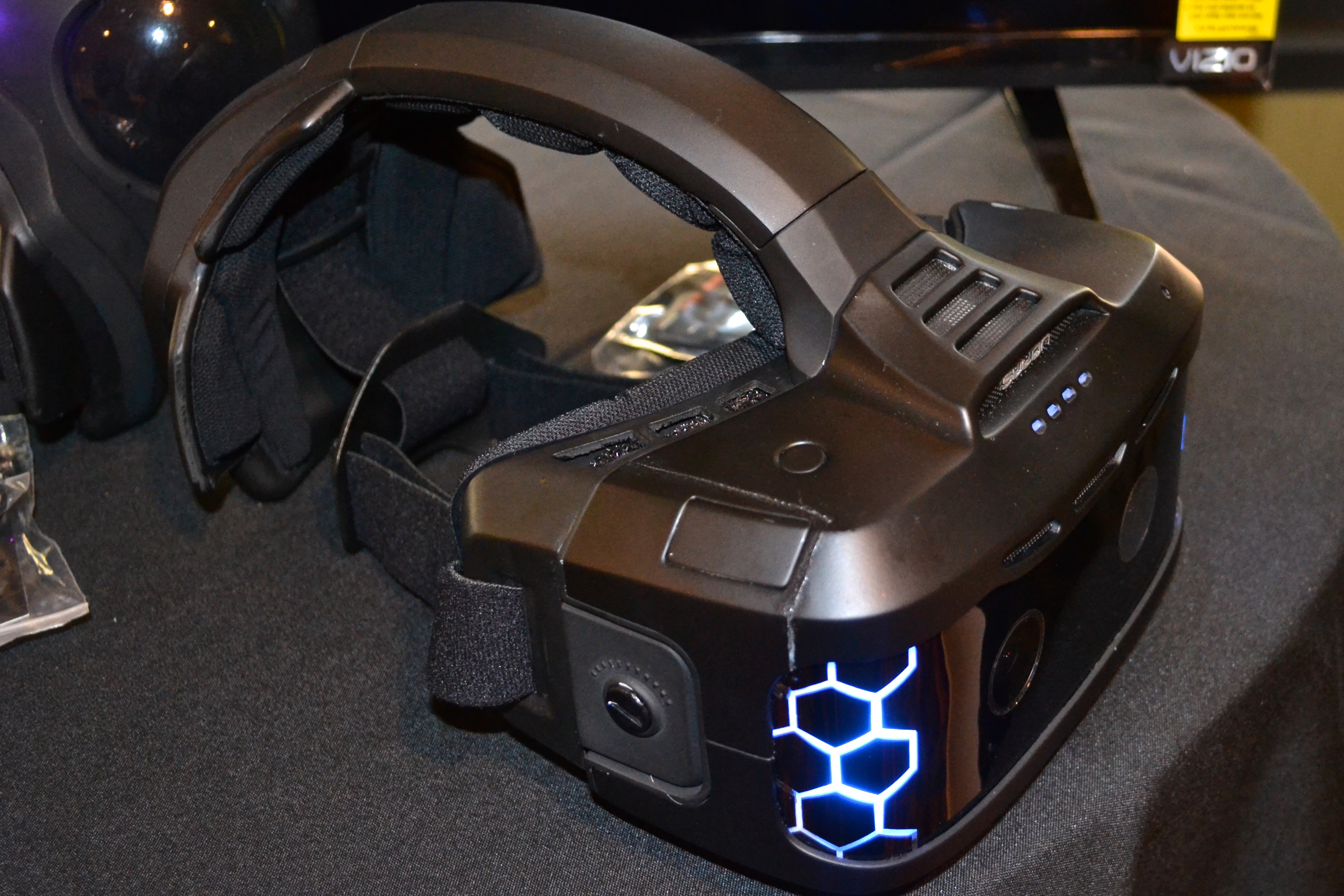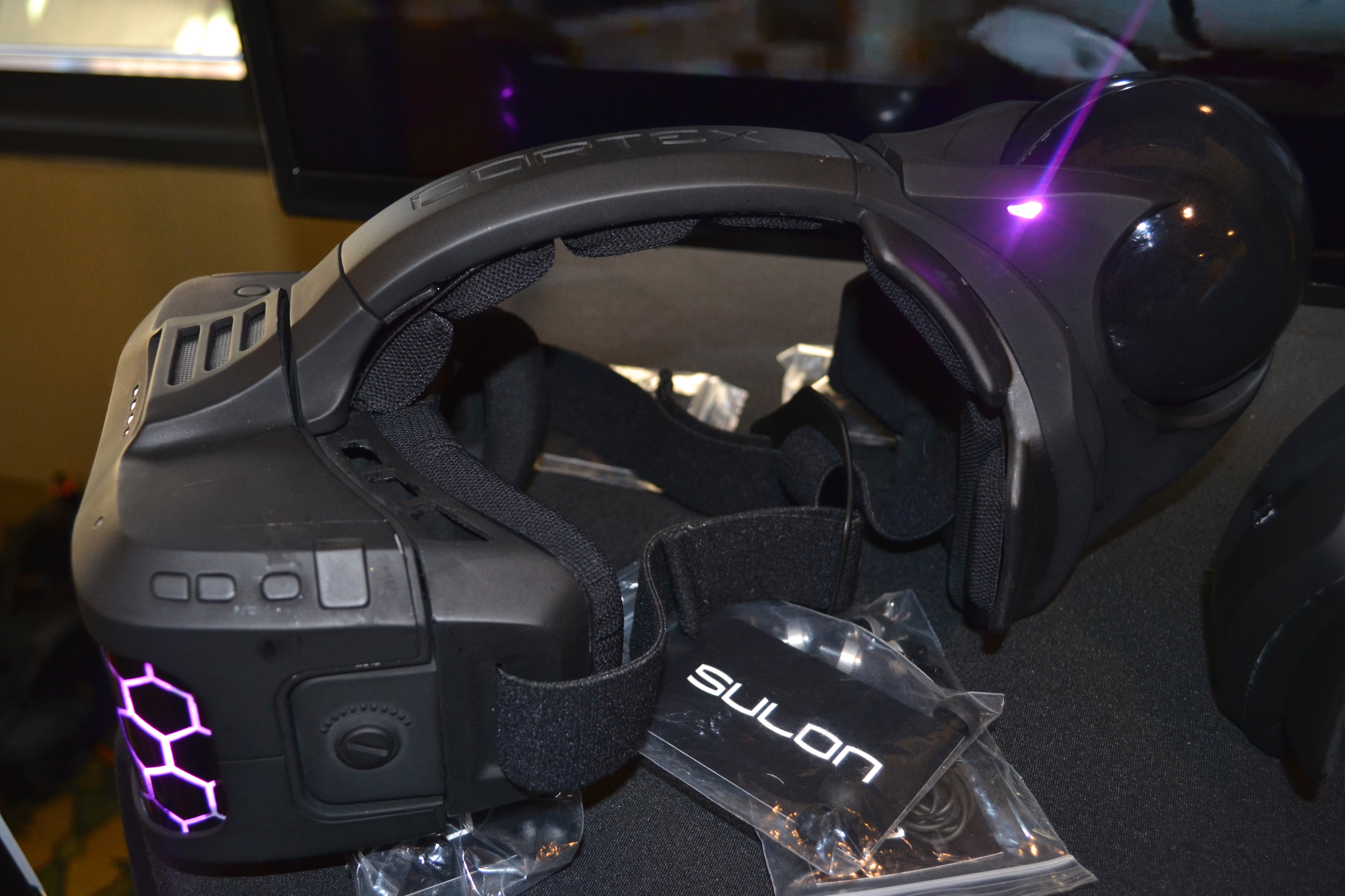A New Perspective On VR: The Sulon Cortex, Hands On
For the past few years, the number of companies interested in creating VR headsets has obviously increased, and a select few have emerged as the notable elite in the group. At first, I thought that Sulon was just another VR company that was thrown into the mix with nothing special to offer. However, its take on VR through its Cortex platform is a unique approach that offers the ability to move anywhere in a scene, and it doesn't confine the user to a fixed space. I took Cortex for a test drive at GDC to see how it would play out in the ever-growing VR arena.
The first thing that stood out for me was its different design. When you think of VR, the image of a large headset in front of the face along with an elastic headstrap is what comes to mind. To this, Sulon added a small orb that rests behind your head, which differentiates it somewhat.
With Oculus' Crescent Bay, you're restricted to a small square space, about five feet by five feet, and it also requires a camera to keep track of where the headset is moving. The HTC Vive requires two base stations on opposite corners of the room, which emits a total of four lasers to create the virtual space.
Compared to Oculus, Vive has a large space to play with at about five meters. Razer's OSVR, Sony's Morpheus, and Crescent Bay all need cameras to track the moving headset. By contrast, Sulon claims that Cortex's orb can continually scan the room you're in and update your virtual space in real-time as you move.
This way, you don't have to worry about setting the distance; Cortex will do the job for you. Unfortunately, I wasn't able to see this in action because the company is still working on the software, but company representatives said that it will be native to Cortex in a few months. In the meantime, Sulon was able to show me something that the mighty Oculus has yet to prove. Cortex gives you the freedom to move around during cinematic scenes to get any view you want of the action.
The demo Sulon showed me was originally a 2D demo scene using the Unreal Engine. It featured a crumbling subway station where a soldier fought off multiple attackers. If you were viewing the demo on something like Oculus, you could only see the action from one side. Sure, you can look closer or try to get a slightly different angle, but you can't actually walk to the other side of the room and watch the same scene from there. But Cortex was actually able to do that.
As the soldier fought each enemy, I paced around the room, watching the fight from every possible angle. I stood behind the main character as he was pushed to the wall and turned around just in time to see the tiling crumble behind me where he hit the wall. In a way, I felt like the cameraman in a film production. I could move wherever I wanted and get just the right angle to give me (and the viewer) the best possible shot of whatever is going on in front of me.
Get Tom's Hardware's best news and in-depth reviews, straight to your inbox.
This impressive capability definitely makes Sulon a brand to be recognized as it has the potential to really change the VR game. After the demo, I was thinking of cinematic experiences that could benefit from Cortex, and I immediately though of The Avengers.
Imagine standing in a large area with Cortex and having the movie playing the scene of the climactic battle in front of Grand Central Station. Not only can you see the action unfold in front of you, but you could move around and focus on certain parts that the movie couldn't show you, such as following your favorite superhero through the fight. Even if The Avengers was already your favorite movie, the possibilities Cortex offers could change the way you view it in powerful ways.
Virtual reality is more than just putting on a device to see another world. It's about interacting with various elements in it and taking the time to move around as if you were actually there. Sulon's Cortex has achieved what the rest could not by freeing you from the restrictive shackles of space and giving you the ability to explore your favorite scenes from new angles.
There's still a lot of work to be done, not just for Sulon, but also for the other important VR brands. Competitors could possibly catch up to Sulon's idea of a non-restrictive, free-angle area, but the fact remains that what Cortex has is special.
At the moment, it supports the Unity3D and Unreal engines, with a development kit shipping later this year for $499. If it can deliver on other key features of good VR, such as high resolution and interactivity, it could evolve from a company I'm just introducing to you now to a household name when all these VR devices finally hit the consumer market.
Follow Rexly Peñaflorida II @Heirdeux. Follow us @tomshardware, on Facebook and on Google+.
Rexly Peñaflorida is a freelance writer for Tom's Hardware covering topics such as computer hardware, video games, and general technology news.
-
lancelot123 I'm assuming the ball on the back is there to help make it not so front heavy as well as other uses. Balancing the weight out like that is a great idea.Reply -
eldragon0 I don't see how the distinguishing points here really make it that much better than other options. First off, speculation: I'd be willing to say the final release of the Oculus will have room wide movement, as they have been going more and more towards movement with each update. Secondly, Assuming the tracking is the same, I'd be willing to say that if it's developed for unreal, using that same demo with the oculus or really any other vr would net the same result of being able to move around the scene. They are just the ones to show it off first.Reply -
Quait "As the soldier fought each enemy, I paced around the room, watching the fight from every possible angle. I stood behind the main character as he was pushed to the wall and turned around just in time to see the tiling crumble behind me where he hit the wall. In a way, I felt like the cameraman in a film production. I could move wherever I wanted and get just the right angle to give me (and the viewer) the best possible shot of whatever is going on in front of me."Reply
Thats just a software thing. Its a demo that other VR headsets could also play.
This demo only shows what VR is capable of, not this headset in particular... -
Charles Ellis I think The Avengers example mentioned is pretty crazy wishful thinking. Even if there was any chance that consumers would have hardware capable of rendering those scenes in real time within the decade, it's unlikely that film studios would take advantage of that ability. They're just not in the business of making fully immersive scenes that you can explore, as described in this article.Reply
Ignoring even all of the budgetary concerns that come with expanding every scene to the degree necessary to support such an experience, imagine how difficult it would be to direct such a beast. Approving a particular take when there are a bunch of things potentially going on which the director can't be watching at any particular moment would really slow the process immensely.
I could see something of the sort being developed by dedicated studios working on content specifically for that medium, but I highly doubt that traditional films will make that transition. -
d_kuhn So it seems to me that limiting the pov to one side of a scene is a software choice not some limitation on the hardware. It's possible that one headset will allow you to rotate 360 degrees and the other won't... and that's a cool feature, but motion limitations (unless you're house is huge) means any headset will have hand based motion (joystick or something) that would allow you as much freedom of motion as needed.Reply -
wrxturbo I think it will still be a while before VR becomes good enough for that type of movie making. The majority of the first adopters of VR will be more interested in the potential gaming applications were you can interact with the content. Imagine playing Battlefield, Call of duty or better yet Grand Theft Auto in a virtual environment. Gamers of these games already know the limitations of a 2D environment, not being able to look around a corner without sticking your whole body in plain view or getting attacked from the side where if you had the peripheral vision like in real life you could had seen it coming. Basically it would be possible to just be aware of your surroundings so you can be the most effective at whatever.Reply

